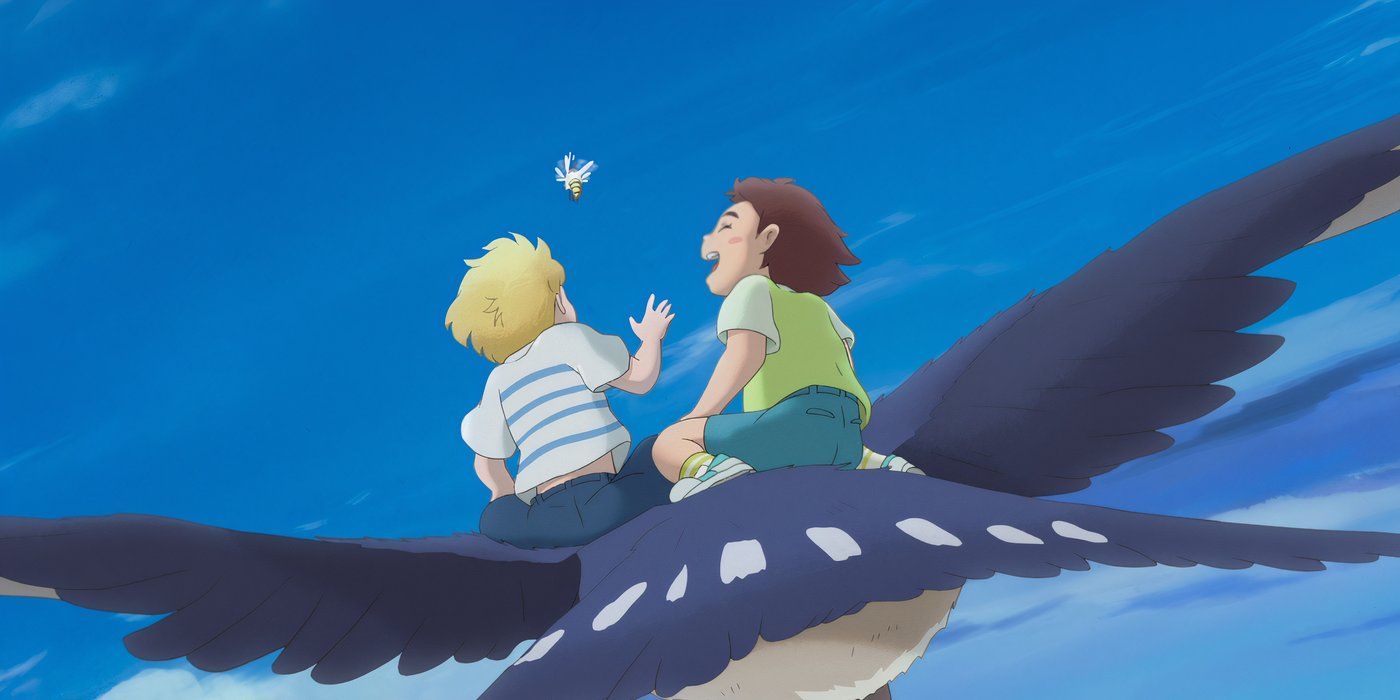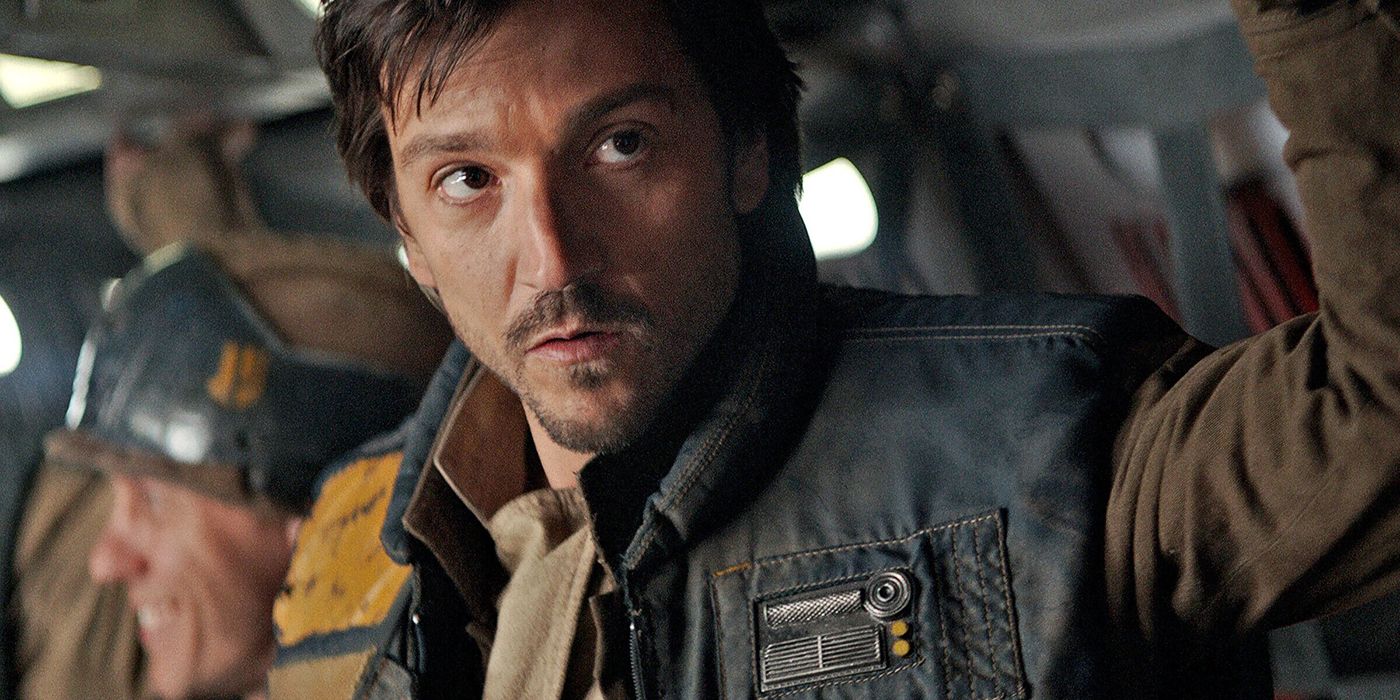The Big Picture
- Yoshiaki Nishimura discusses
The Imaginary
, the film that inspired him, telling the truth even if it’s scary, and what his kids think of his work. - Nishimura’s passion for truth in storytelling, even when the worlds he brings to life can be rather scary, is what drives him to create his films the way he does.
- Nishimura aims to communicate the importance of facing fears and finding support in imagination, even in dark times.
The vibrant new film The Imaginary, hailing from Studio Ponoc and now streaming on Netflix, has quite a lot on its mind. The same is true of writer and producer Yoshiaki Nishimura. His latest project, based on the novel by A. F. Harrold, is an expansive expression of this, telling the story of a young girl named Amanda and her imaginary friend Rudger with whom we explore a stunning animated world just as their own starts to be consumed by darkness. In my review from when it premiered at this year’s Annecy Film Festival, I wrote that it provides “a demonstration of how the melding of art and emotion in this thing we call cinema can create an experience unlike anything else” and that “you’d be hard-pressed to imagine better proof of this in graceful and gorgeous action than the astounding final frames you’ll see here.” In an interview, I talked with Nishimura about how he became drawn to this story, his passion for bringing scary moments to life, and the power of capturing the truth of the world.
What First Brought Made Yoshiaki Nishimura Want to Adapt ‘The Imaginary?’
Collider: What was your relationship like with A.F. Harrold’s book before taking on this process?
YOSHIAKI NISHIMURA: I found this book in one of the bookstores in town. I read a lot of books. Japanese, American, UK, German, a lot of different books. I thought this was such an exciting book. It was fun with fantasies, but also somewhat scary. But the part that attracted me most was the setting. Usually, the main format of stories about children is that they meet this space being like E.T. or fairy or creature like Totoro. Then, through that, they grow up, and that’s the primary story you often hear. For me, what was special was that this book focused on a main character as a boy that emerged as the imagination of a girl.
Then this world is depicted through the imagined being that the girl created. What was intriguing was the part where, if something happens to this girl or if this girl forgets Rudger, then no one else in the world can even see him. I felt this possibility that, if we were able to depict Rudger in this animation, then we would be able to create a story based on the unseen, important things in the world.
What Animated Film Inspired Yoshiaki Nishimura When Making ‘The Imaginary?’
You mentioned Totoro and I was thinking of so many different movies. I was thinking of Spirited Away, I was thinking of Millennium Actress, but I was curious, what were the movies, with your long history working in animation, that you were thinking about as you set out on this new one?
NISHIMURA: My answer might surprise you. The Grave of the Fireflies. That animation is the most important animation for me. I first saw The Grave of the Fireflies when I was ten and I was a child like Amanda. I had sadness and grief within me. This was the one film that communicated to me through the television. When I was ten, I was a child who had no trust towards society or grown-ups. I loved the story so much, I felt like this film was made just for me. So when I created this Rudger’s story, it was about someone who will be sitting beside the children and being supportive. The Grave of the Fireflies was that someone who would communicate to me and that’s why it was so important.
Animation is almost like an imaginary friend. When they grow up, they might not remember the title or the character or anything, but still it remains in the heart of children, even if they thought they had forgotten. We are creating these films having faith and belief in the future of the children, that after they grow up, they’ll still be very happy. That has become the building block, the basis, of my approach to creating animation.
Why Was Capturing The Horrors Of the World Important to Yoshiaki Nishimura With ‘The Imaginary?’
When you point to the Grave of the Fireflies, there is a very heavy, almost horrifying, component to The Imaginary. How were you thinking about it in terms of that horror?
NISHIMURA: I am so happy with your question. You see this often in stories from England, they don’t hide the scariness. Many of the British stories have this scariness within their plot. The written language is different, of course, from the visual language. When you create the film, sometimes the scariness can be very vivid. So I thought a lot about making sure that we can get the right balance when we turn this into visuals. When I was reading the book, I had one idea in mind and what I felt was we should not lie to the children.
I’m a father of one son and one daughter. My children, and other children these days, are more exposed to scary things through television than the time when we were children in the world. [They see] conflict in the world, visuals of earthquakes in Japan. If animation depicts the world by sending the message that the world you live in is all happy and there is nothing to be afraid of, I think that’s a lie. Something that I really wanted to let the children know is that, even if there is something that scares you, you are able to overcome these fears and move on. I wanted to communicate that that’s why there are imaginary friends around you and supporting you. As a filmmaker, for me, the most important thing is to tell the truth.
Have your children seen the movie? What did they think of it and what conversations did you all have?
NISHIMURA: Oh, my children, they’re like huge fans of me [laughs]. They all enjoyed it. My daughter tends to be the originator of many ideas that I’ve created in my films. She’s now, like eighteen, so when she saw the film, she said ‘Oh, this is something I remember. Oh, this comes from my childhood experience.’ She told me that she cried eight times watching. But it’s not anything particularly special to my children. Something that left the deepest impression is, when the screening ended in Japan, a high school boy came up to me and I said ‘How was it?’ He was shaking and he was so moved that he couldn’t utter any words. So what I felt was, on the surface this film may be a fun feast, but it has some power to connect really deeply within children. That is what we want to convey and I believe this film has that power.
The Imaginary is now available to stream on Netflix in the U.S.























































![Social Media Spring Cleaning [Infographic] Social Media Spring Cleaning [Infographic]](https://imgproxy.divecdn.com/9e7sW3TubFHM00yvXe5zvvbhAVriJiGqS8xmVFLPC6s/g:ce/rs:fit:770:435/Z3M6Ly9kaXZlc2l0ZS1zdG9yYWdlL2RpdmVpbWFnZS9zb2NpYWxfc3ByaW5nX2NsZWFuaW5nMi5wbmc=.webp)
![5 Ways to Improve Your LinkedIn Marketing Efforts in 2025 [Infographic] 5 Ways to Improve Your LinkedIn Marketing Efforts in 2025 [Infographic]](https://imgproxy.divecdn.com/Hv-m77iIkXSAtB3IEwA3XAuouMwkZApIeDGDnLy5Yhs/g:ce/rs:fit:770:435/Z3M6Ly9kaXZlc2l0ZS1zdG9yYWdlL2RpdmVpbWFnZS9saW5rZWRpbl9zdHJhdGVneV9pbmZvMi5wbmc=.webp)
















